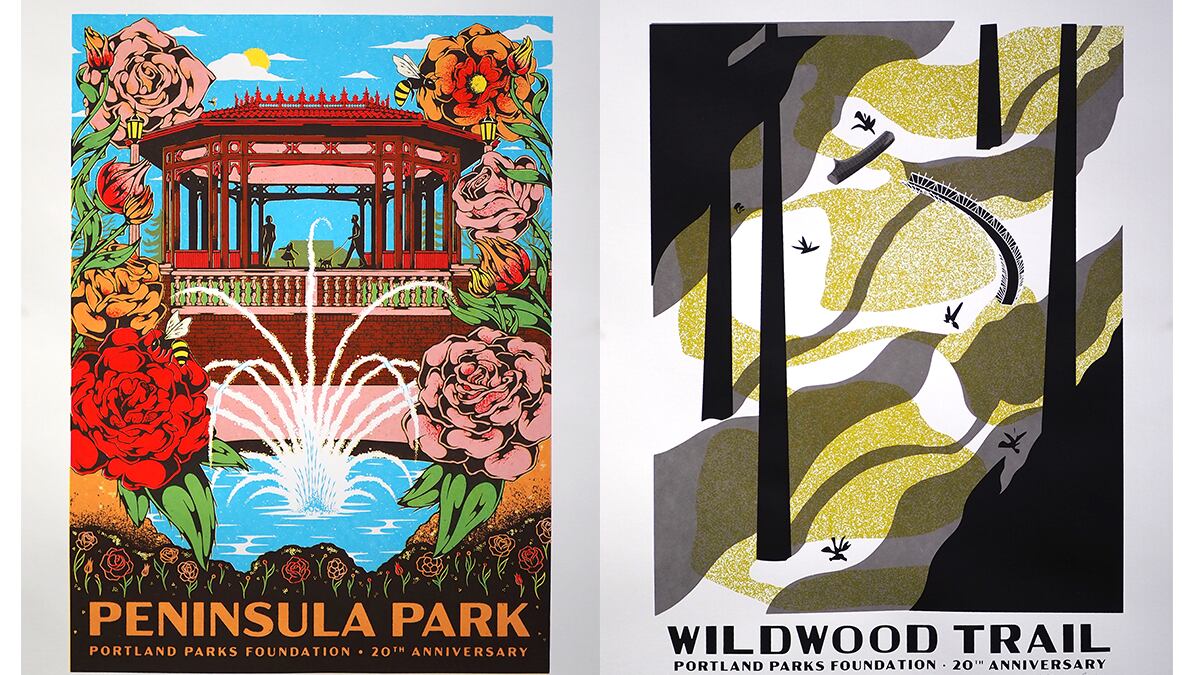A hallmark of gift shops and kitchen wall calendars, most national parks posters are replicas of a handful of Works Progress Administration prints. But why stop at national parks? Don’t Portland city parks deserve a little illustrative shine, too? After all, civic leaders purchased much of Washington Park in 1871—three decades before Yosemite was established.
That was the logic of the Portland Parks Foundation, the private fundraising arm for Portland Parks & Recreation. The group decided to celebrate its 20th anniversary by commissioning four graphic designers, chosen from 97 hopefuls, to draw tributes to three iconic parks: Alberta, Laurelhurst and Peninsula, as well as the Wildwood Trail.
Allie Yacina picked Laurelhurst Park, near her house. In mood-boarding meetings, the foundation set guardrails for the designs: “You have four colors, here’s the size, and you have to include this type,” Yacina recalls. Within those limits, the designers tried designs far more abstract and pop than their New Deal-era inspirations.
The trees in these screen prints seem to dance off the page—a reminder of the energy in places meant for human enjoyment as much as conservation. In Yacina’s design, the four colors (Prussian blue, dark and light green, and a pastel pink) create windows of action, like glancing through breaks in the fir canopy and spotting a house at the park’s edge.
In his print of the Wildwood Trail, which winds through nearly 30 miles of West Hills woods, Zach Pranji used just two colors—golden green and black—and used long shadows to convey a Brothers Grimm feeling of getting lost in mysterious forest. “I couldn’t put it all on there,” Pranji says. “But I wanted something map-like [that] somehow conveys the more sublime emotional experience of the trail.”
The posters are idealized—no used syringes or drive-by shootings—but a little realism seeps in. Yacina included a crow on a railing. A foundation member wondered if perhaps a songbird might be more fitting. “Crows are such a staple for me at this park,” she says. “You hear them in the background all the time. I don’t think they’re pests at all.” The crows stayed.
